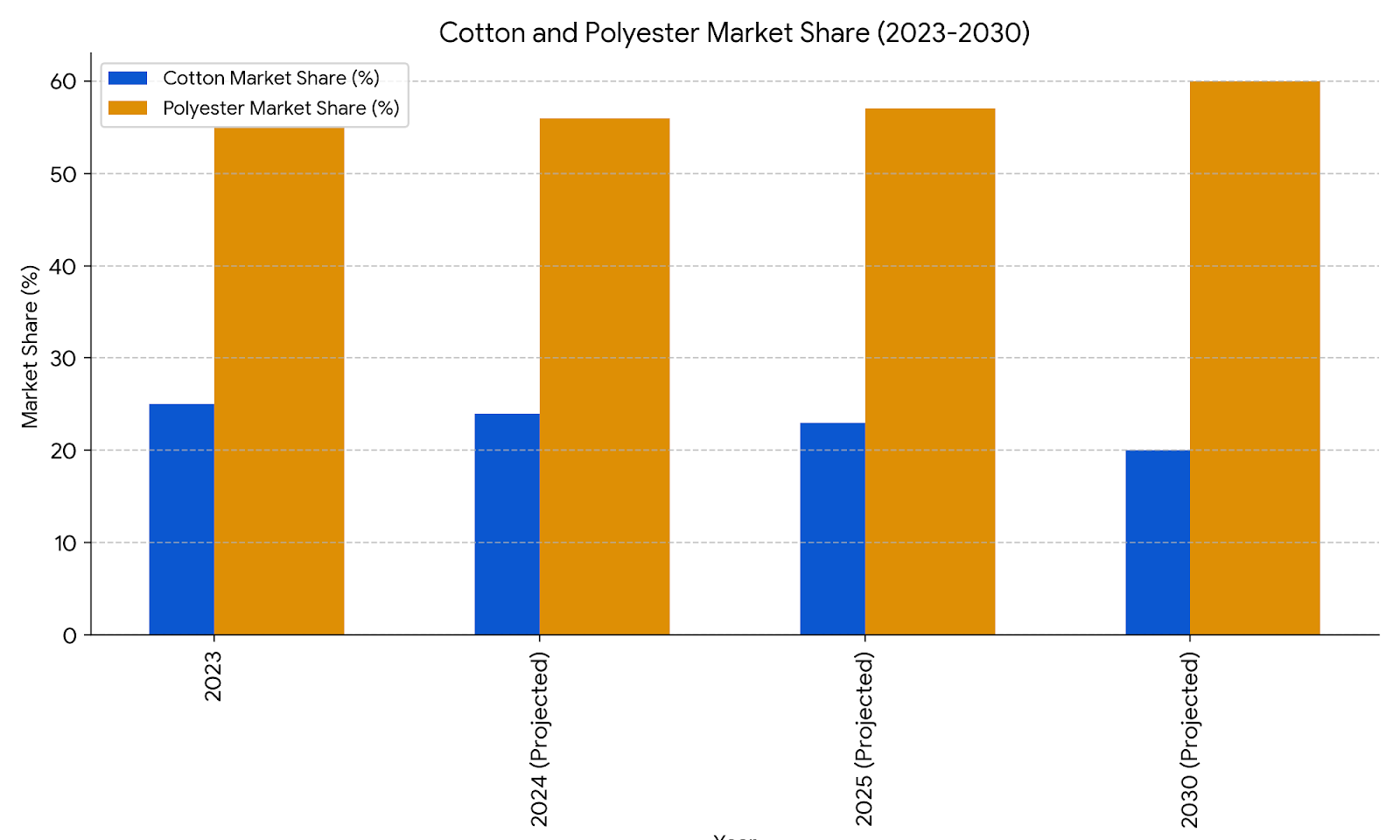Polyester outpaces cotton in a global textile shift

The global textile industry is witnessing a significant shift towards polyester, with its market share steadily increasing, while cotton faces challenges in maintaining its position. The dominance of polyester, particularly in China and South Asia, highlights its growing influence on the global textile landscape. Polyester's versatility and cost-effectiveness have driven its popularity, concerns about sustainability and shifting consumer preferences could signal a potential resurgence for cotton in the future.
Versatility, adaptability, costs pushes demand
Polyester's appeal lies in its versatility, adaptability, and cost-effectiveness. Its man-made properties offer consistent quality and the ability to meet diverse demands. Polyester fabrics are known for their strength and resistance to wrinkles and shrinkage. Additionally, polyester's lightweight, breathable, and blendable nature makes it suitable for various applications. Moreover, advancements in polyester production have led to the development of new fibers with enhanced properties, such as moisture-wicking and quick-drying capabilities. No wonder, Lenzing a leading producer of wood-based viscose fiber, is focusing on developing recycling technologies to make its products more sustainable and compete with recycled polyester.
Table: Shifting fiber landscape
|
Year |
Cotton market share (%) |
Polyester market share (%) |
|
2023 |
25 |
55 |
|
2024 (Projected) |
24 |
56 |
|
2025 (Projected) |
23 |
57 |
|
2030 (Projected) |
20 |
60 |
Comparatively cotton faces several challenges in competing with polyester. Its production is influenced by environmental factors, making it susceptible to fluctuations in yield and quality. Moreover, cotton's association with water consumption, pesticide use, and competition with food crops has contributed to negative perceptions.
Scenario in China, India, and beyond
Asia, being the epicenter of global textile manufacturing, plays a crucial role in shaping the polyester vs. cotton narrative.
China for example, is the world's largest producer and consumer of both polyester and cotton. However, polyester production in China is projected to grow at a much faster rate, reaching 73 per cent of global production by 2030. India is another major player in the textile industry, with a strong cotton production base. However, the growing demand for polyester fabrics and the increasing focus on sustainability are driving a shift towards polyester in India as well. No wonder, Reliance Industries a major petroleum refining company, has invested heavily in polyester production, citing its versatility and potential to replace cotton and viscose in various applications. In other parts of Asia, countries like Bangladesh, Vietnam, and Indonesia are also witnessing a similar trend, with polyester gaining ground over cotton.
Despite its dominance, polyester faces challenges related to sustainability, with recycled polyester accounting for only 15 per cent of the total polyester textiles used today. And there is the threat of cotton's potential comeback. Experts believe cotton has a chance to make a comeback by focusing on sustainability, technology, and consumer needs. Regenerative farming practices, improved recycling technologies, and a focus on developing cotton fibers with enhanced functionalities could drive a resurgence in cotton demand.
While polyester currently dominates the textile industry, the future of fibers is likely to be more nuanced. Sustainability concerns, shifting consumer preferences, and technological advancements could lead to a more balanced market share between polyester and cotton. The key lies in innovation, collaboration, and a focus on meeting the evolving needs of consumers and the planet.
